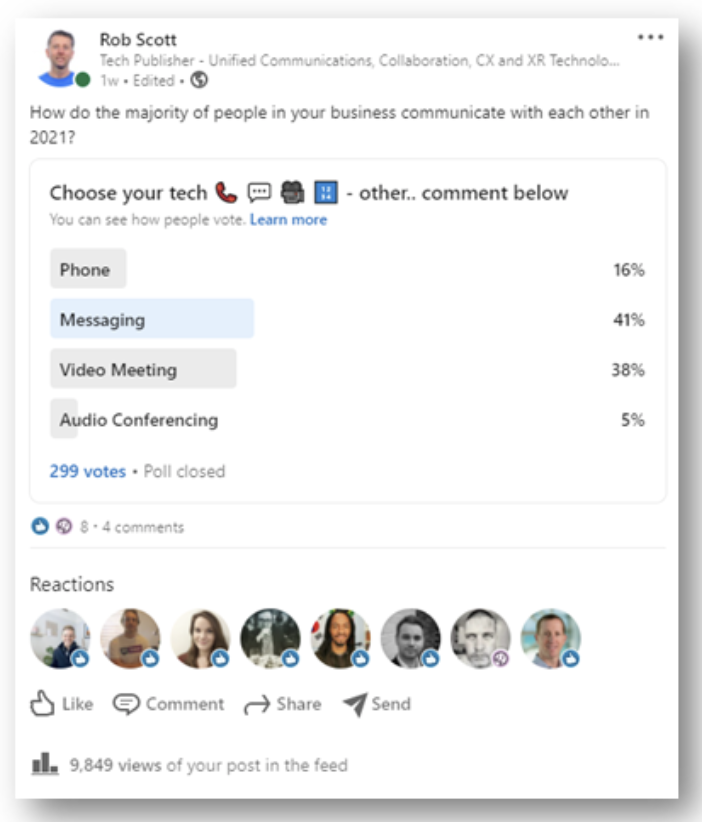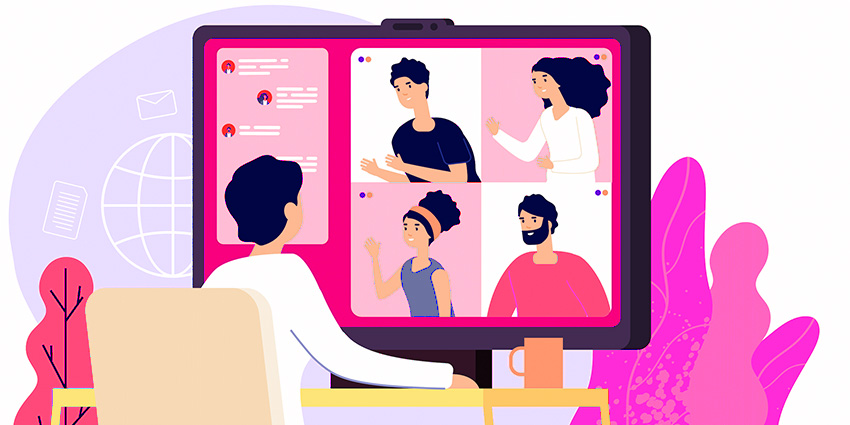It’s no secret that communication and collaboration has changed a decent amount since the 2021 pandemic. For years, we’ve been gradually moving away from things like email in search of something more efficient and reliable. When the pandemic struck, the demand for more contextual, immersive forms of conversation grew greater than ever.
Although calls and voice communication remain a valuable way to connect with colleagues and customers, it’s no longer the go-to option for most teams. I recently ran a LinkedIn poll to find out what tech solutions people are commonly using to stay connected in the new age of work. The results placed video meetings and messaging high above any audio option.
Messaging came out on top with 41% of the votes, followed by video at 38%, phone at 16%, and audio conferencing at a tiny 5%.

What Happened to the Power of Voice?
Voice is, and always will be a critical part of communication for most people. There are still plenty of people I know who would prefer to simply dial a number and make a quick call when they need to discuss something fast. However, calls are no longer the most efficient way to communicate.
Over the last year or so, we’ve had to adapt our communication strategy around a pretty unpredictable world. When the pandemic struck in 2020, it pushed a lot of people to embrace a new remote working strategy much faster than they were comfortable with. We all had to learn to reconnect and stay engaged in an environment where could no longer share a physical space.
Microsoft Teams, Zoom, and other services became the central hub of the workplace. In these landscapes, it became much easier to send a quick message to chat with someone in a channel than it was to send an email or make a call. Chatting through messaging now feels as natural as conversations around the watercooler, it’s no wonder messaging is leading the way in the future of communications.
Messaging is quick, fast-paced, and efficient. It’s ideal for one-on-one quick-fire conversations, but channels also mean that messaging is fantastic when we need to update a larger group of people on important news at once. Messaging feels simple and streamlined – it’s something everyone can take part in. We were already pretty familiar with the concept before the pandemic, thanks to social media chat, WhatsApp, and similar tools.
The Demand for Video and Immersive Chat
Messaging earns the top spot in the preferred tool for modern communication because it’s so easy. The channels and threads in tools like Teams allow us to maintain a constant stream of natural communication in the workplace. You can even predict how quickly you’re going to get a response by checking the presence status of your colleagues.
Video, on the other hand, rose to the top of our communication needs because it was more intimate. We needed a way to maintain a human connection when out of the office, and it’s often difficult to do this without face-to-face interactions. We want to be able to see the people we work with – even if it’s just for short periods.
Videos remind us that we’re all still human beings behind these screens. It strengthens our human bonds, brings contextual queues like facial expression and body language into our discussions, and improves company culture. A video meeting also helps to improve engagement in our conversations, because it’s harder to let your attention drift when you know people can see you. That means people spend more time interacting, and less time checking their email.
What Will The Future of Communication Look Like?
Right now, companies need to make sure they’re offering the right communication experiences to their employees, or they risk losing them. Previous polls I’ve run on LinkedIn have already shown how people feel about not being able to access the right hybrid working experience.
However, business leaders will also need to walk the line between delivering the communication options people need and sticking to compliance and security guidelines. The more apps and tools your employees want to use to stay connected, the more sources of potential risk you’ll have to watch.
For now, at least companies have plenty of access to proven messaging and video tools to support their workers. In the future, it’s likely that the way we communicate will continue to evolve. It won’t be long until mixed, virtual, and augmented reality are part of the hybrid workforce too.
The question to ask yourself is, are you preferred for the future of communication?







